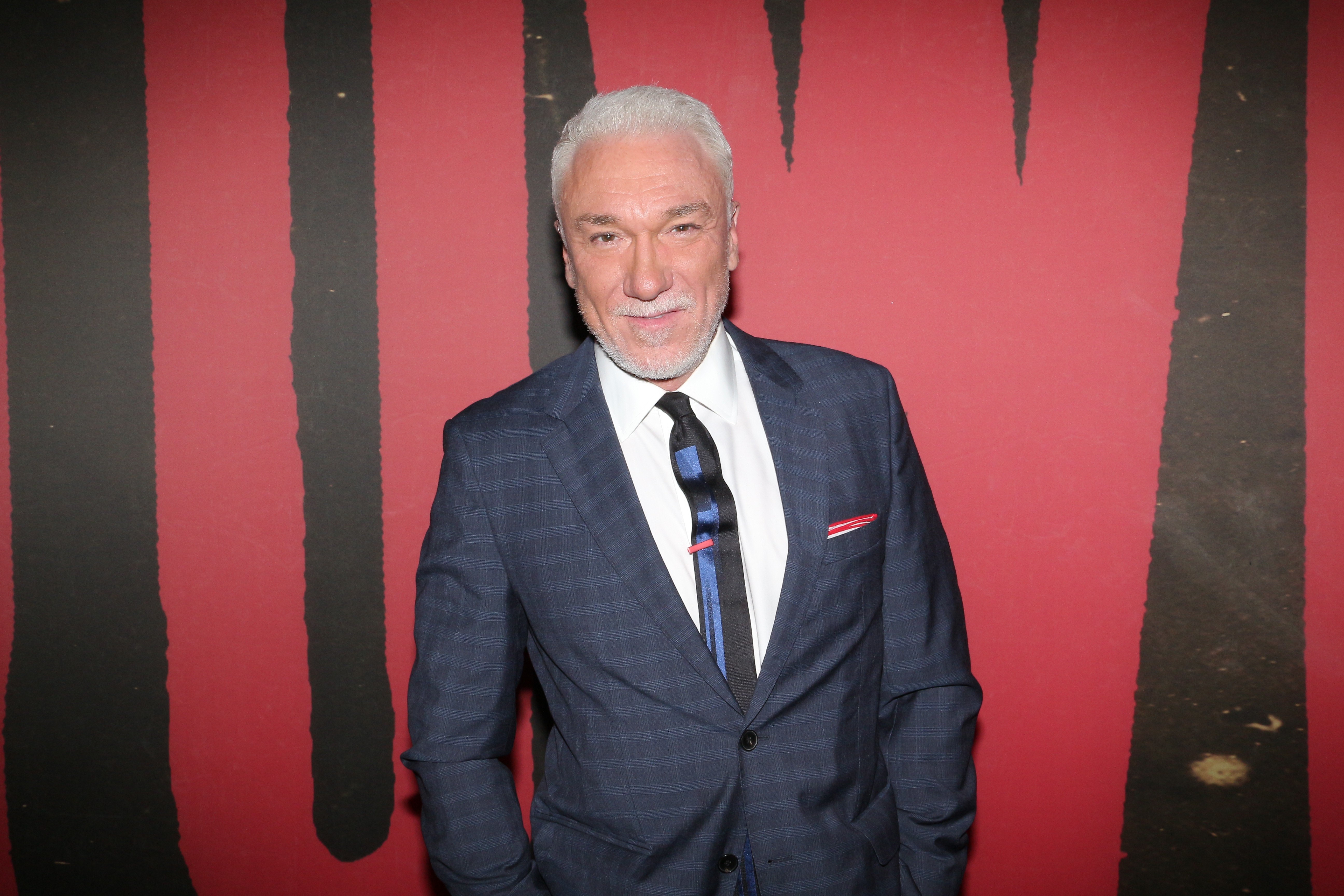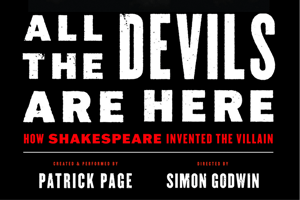Interview: After King Lear, Patrick Page Makes His Way Through Shakespeare’s Villains
Page debuts his new solo show, All the Devils Are Here, off-Broadway at the DR2 Theatre.
Patrick Page knows a thing or two about playing villains: his repertoire includes Scar in The Lion King, the Green Goblin in Spider-Man Turn Off the Dark, Hades in Hadestown, the Grinch who famously stole Christmas, Frollo in The Hunchback of Notre Dame, the list goes on and on. He’s never been one to shy away from these roles, even in the classical repertoire, where he impresses when he’s not doing big-budget musicals. Following an acclaimed, sold-out run at Shakespeare Theatre Company playing King Lear earlier this year, Page is debuting a passion project, a new solo work called All the Devils are Here: How Shakespeare Invented the Villain, at the DR2 Theatre off-Broadway. In the play, Page charts the course of Shakespeare’s development as a writer, while paying tribute to some of literature’s oldest baddies. Here, he tells us how the piece came to be.

(© David Gordon)
This conversation has been condensed and edited for clarity.
Tell me about the trajectory of this project.
I have been working on the show for quite some time. The two great subjects Shakespeare went most deeply into were love and evil. The idea was that, if you started at the beginning of his career in 1590 and went all the way through to 1611 when he ended his writing career, I thought you would be able to find out not only more about the individual characters, but you would be able to discover how Shakespeare became Shakespeare. You’d be able to watch his evolution, not only just of his thought, but his philosophies and what he understood about human beings. Once I lighted upon that idea, it was just about trying to be really rigorous in investigating that journey.
The great director Peter Brook had a technique where he would do his shows, in the second or third week of rehearsal, for a group of kids. Kids will tell you where they’re bored, excited, where it’s not interesting. So I did it for 1,000 high school students at the Utah Shakespeare Festival, and that taught me a lot. I wanted to reach an audience that has very little or no experience with Shakespeare. And it held with these kids. Then I needed to do it for Shakespeare experts, so I went to Prague where they were having a Shakespeare conference, so I could make sure that it held on both ends of those scales. After that, we did a film [during the pandemic], but I didn’t have a great deal of time to write the narrative material. I’m very proud of the film, but it was a stage of the work.
Now, I’ve been able to go back into it and include a couple of characters that I wasn’t able to, but most importantly, I’ve been able to write the narrative that connects all these pieces to really bring the audience through Shakespeare’s journey. Of course, I’m also able to collaborate with these amazing artists in scenic, sound, costume, and lighting design, and my director Simon Godwin. I have him to partner with me on this, which I hope takes it to a whole other level.
What is it about the villains that attract you as an actor over the course of your career?
Their brokenness. A villain is wounded and acts out of that wound. We’re all wounded and we all have darkness. I think what Shakespeare discovered over the course of these 20 years when he was examining these questions was how much of that darkness he had in himself. How much we share. If we know that about ourselves, then we can work with it. We can be careful that it doesn’t emerge in places that it could be harmful and we can be more empathetic about other people when they’re not living at their highest potential. So I have tremendous empathy for all of these characters, even the ones who have their roots in an animated movie or a comic book. I think of them as people, broken people, people working out some dynamic, some pathology. And I relish that.
You’re coming at this production having just done a massively successful King Lear. Reflecting on that journey, what was that ride like for you?
I think it was a peak experience. The analogy that’s frequently used with Lear is the scaling of a mountain. For a classical actor, there are certain peaks that you are challenged to attempt. When you’re a young actor, of course, that’s Hamlet. And when you’re an older actor, that’s King Lear because it encompasses pretty much everything. It will challenge the very limits of what you are capable, just as a marathon would do. It will take everything you have and then ask for more. And the wonderful thing in a case like this is, being able to do it over a series of six weeks or so, eight times a week, you think, “maybe I can get a little closer to the peak.” And I’m hoping that All the Devils Are Here is similar. One of the reasons I wanted to mount it now is that I developed an appetite for that with King Lear and with Simon and, and I wanted to do it again. And indeed, I’d like to do Lear again. I’m hoping to do it in the future in New York.









